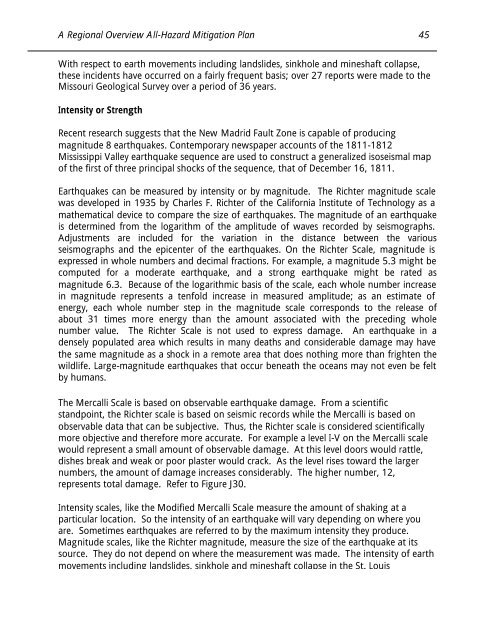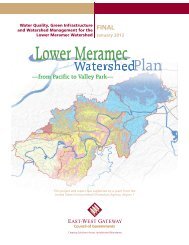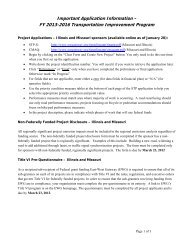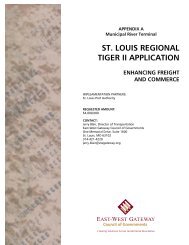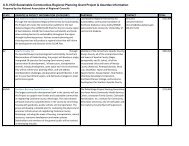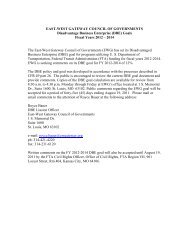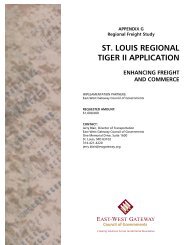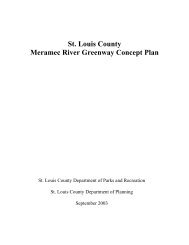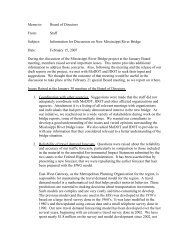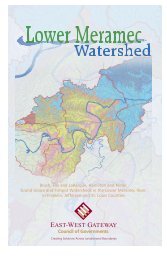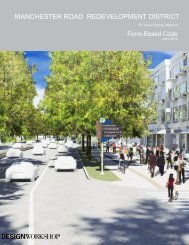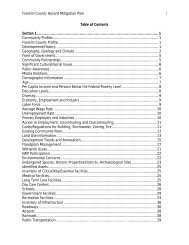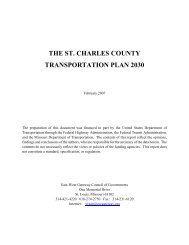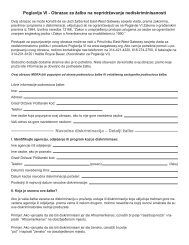Jefferson County - East-West Gateway Coordinating Council
Jefferson County - East-West Gateway Coordinating Council
Jefferson County - East-West Gateway Coordinating Council
You also want an ePaper? Increase the reach of your titles
YUMPU automatically turns print PDFs into web optimized ePapers that Google loves.
A Regional Overview All-Hazard Mitigation Plan 45<br />
With respect to earth movements including landslides, sinkhole and mineshaft collapse,<br />
these incidents have occurred on a fairly frequent basis; over 27 reports were made to the<br />
Missouri Geological Survey over a period of 36 years.<br />
Intensity or Strength<br />
Recent research suggests that the New Madrid Fault Zone is capable of producing<br />
magnitude 8 earthquakes. Contemporary newspaper accounts of the 1811-1812<br />
Mississippi Valley earthquake sequence are used to construct a generalized isoseismal map<br />
of the first of three principal shocks of the sequence, that of December 16, 1811.<br />
Earthquakes can be measured by intensity or by magnitude. The Richter magnitude scale<br />
was developed in 1935 by Charles F. Richter of the California Institute of Technology as a<br />
mathematical device to compare the size of earthquakes. The magnitude of an earthquake<br />
is determined from the logarithm of the amplitude of waves recorded by seismographs.<br />
Adjustments are included for the variation in the distance between the various<br />
seismographs and the epicenter of the earthquakes. On the Richter Scale, magnitude is<br />
expressed in whole numbers and decimal fractions. For example, a magnitude 5.3 might be<br />
computed for a moderate earthquake, and a strong earthquake might be rated as<br />
magnitude 6.3. Because of the logarithmic basis of the scale, each whole number increase<br />
in magnitude represents a tenfold increase in measured amplitude; as an estimate of<br />
energy, each whole number step in the magnitude scale corresponds to the release of<br />
about 31 times more energy than the amount associated with the preceding whole<br />
number value. The Richter Scale is not used to express damage. An earthquake in a<br />
densely populated area which results in many deaths and considerable damage may have<br />
the same magnitude as a shock in a remote area that does nothing more than frighten the<br />
wildlife. Large-magnitude earthquakes that occur beneath the oceans may not even be felt<br />
by humans.<br />
The Mercalli Scale is based on observable earthquake damage. From a scientific<br />
standpoint, the Richter scale is based on seismic records while the Mercalli is based on<br />
observable data that can be subjective. Thus, the Richter scale is considered scientifically<br />
more objective and therefore more accurate. For example a level I-V on the Mercalli scale<br />
would represent a small amount of observable damage. At this level doors would rattle,<br />
dishes break and weak or poor plaster would crack. As the level rises toward the larger<br />
numbers, the amount of damage increases considerably. The higher number, 12,<br />
represents total damage. Refer to Figure J30.<br />
Intensity scales, like the Modified Mercalli Scale measure the amount of shaking at a<br />
particular location. So the intensity of an earthquake will vary depending on where you<br />
are. Sometimes earthquakes are referred to by the maximum intensity they produce.<br />
Magnitude scales, like the Richter magnitude, measure the size of the earthquake at its<br />
source. They do not depend on where the measurement was made. The intensity of earth<br />
movements including landslides, sinkhole and mineshaft collapse in the St. Louis


